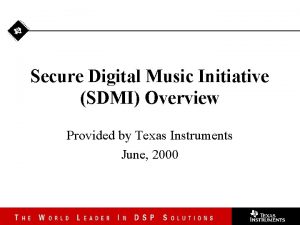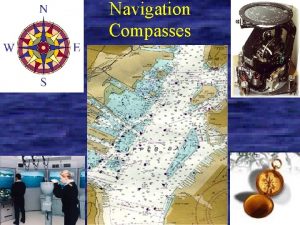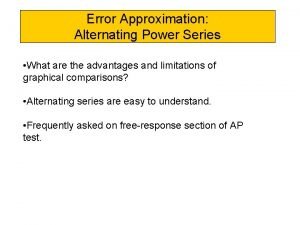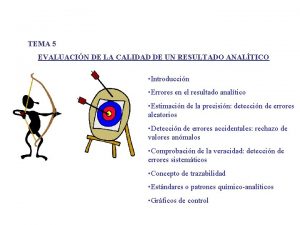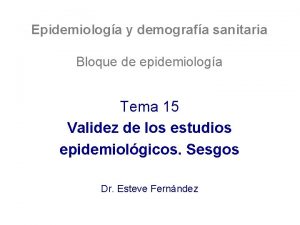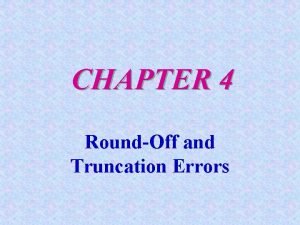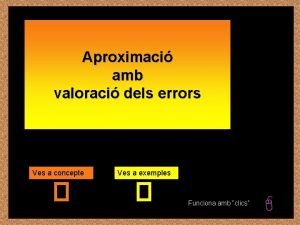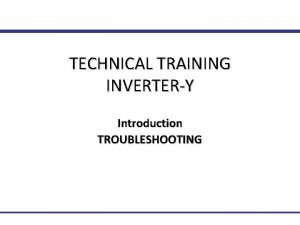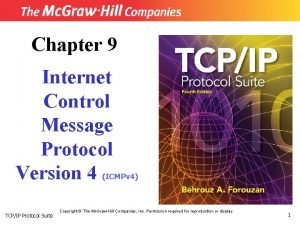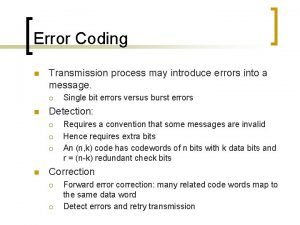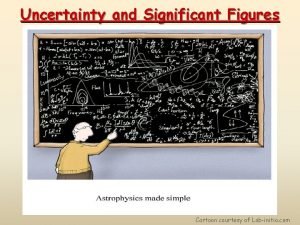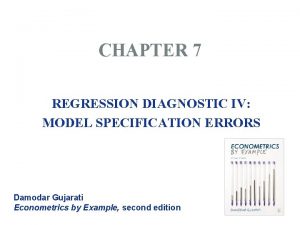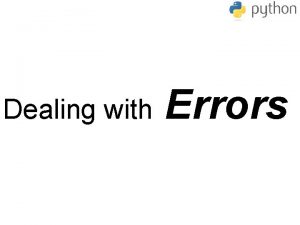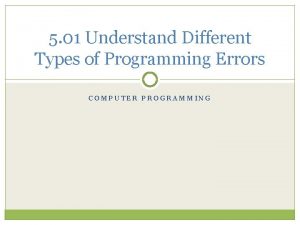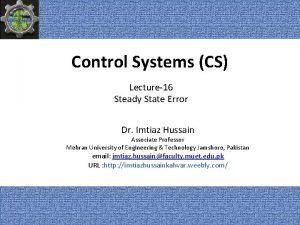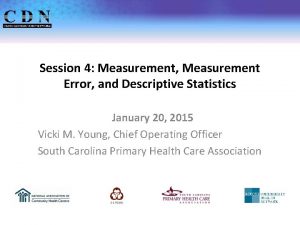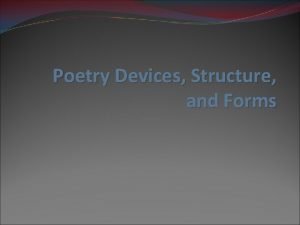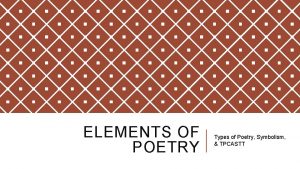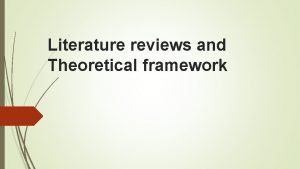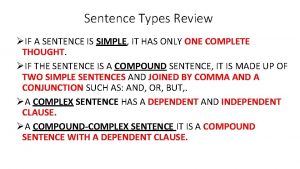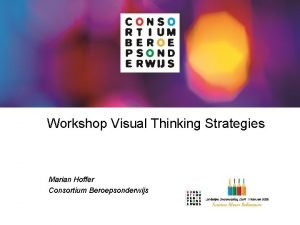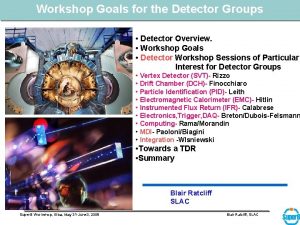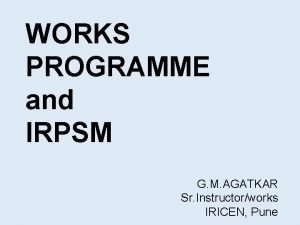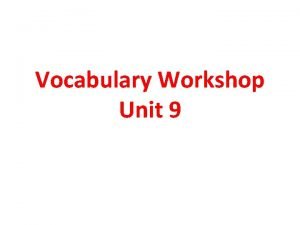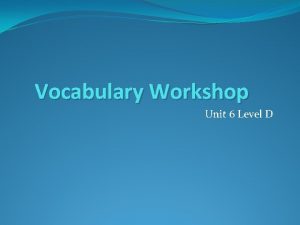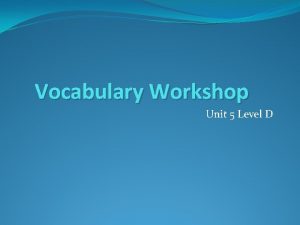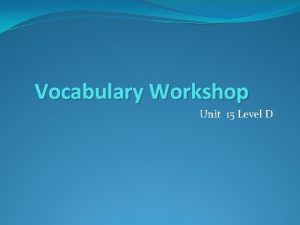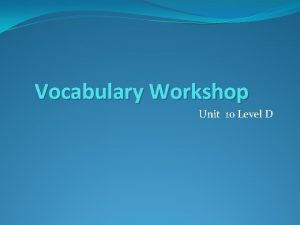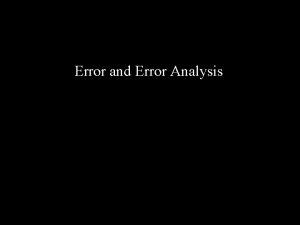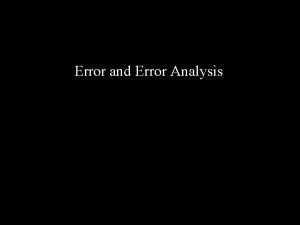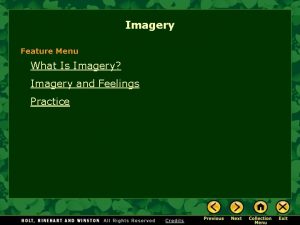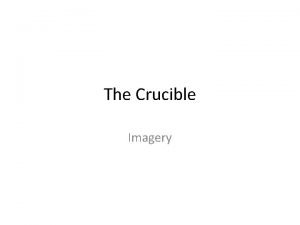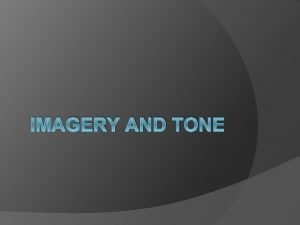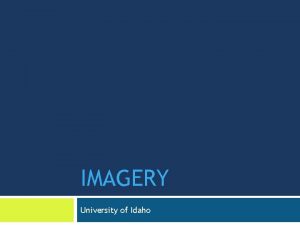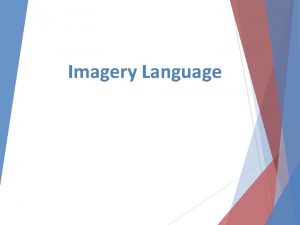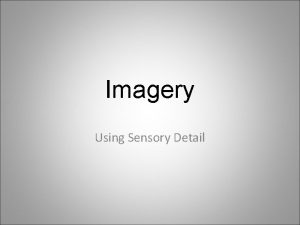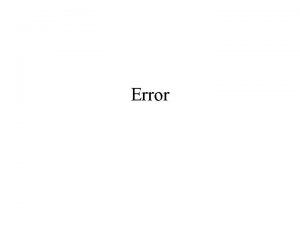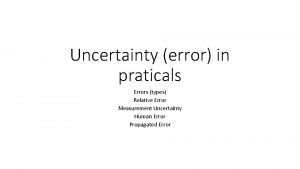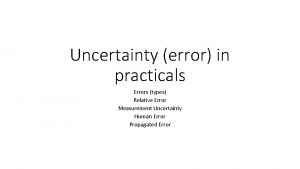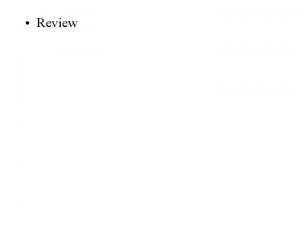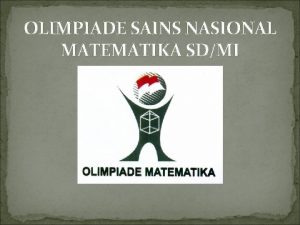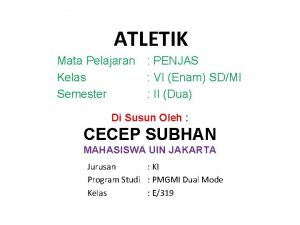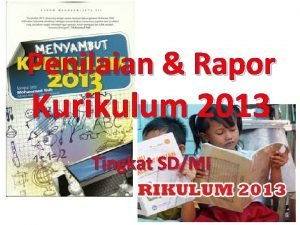SDMI IMAGERY WORKSHOP REVIEW OF IMAGERY TYPES ERROR















































- Slides: 47

SDMI IMAGERY WORKSHOP REVIEW OF IMAGERY TYPES & ERROR BUDGET SPREADSHEET March 2 -4, 2009 Anchorage, Alaska Russ Cowart i-cubed

Tier 1 Broad Scale Features Tier 2 Moderate Scale Features 10 m SPOT-5 MS, ALOS AVNIR-2 MS 5. 8 m LISS-4 MS 5 m SPOT PAN/PSM 4 m IKONOS MS 2. 8 m Quick. Bird MS 2. 5 m SPOT PAN/PSM, ALOS PRISM PAN 1. 65 m Geo. Eye-1 MS 1 m IKONOS PAN/PSM 0. 6 m Quick. Bird PAN/PSM 0. 5 m World. View-1 PAN Tier 3 Detailed Scale Features 0. 5 m Geo. Eye-1 PAN/PSM Aerial Orthophotography

5 CM AERIAL, THE HAGUE, NETHERLANDS

15 CM AERIAL

BEIRUT 50 CM WORLDVIEW-1

BEIRUT 61 CM QUICKBIRD

1 M IKONOS

CALIFORNIA, RADAR ORI INTERMAP 1: 6, 400

CALIFORNIA, B&W OPTICAL IMAGERY 1: 6, 400

CALIFORNIA, COLOR OPTICAL IMAGERY 1: 6, 400

CALIFORNIA, RADAR ORI INTERMAP 1: 12, 800

CALIFORNIA, B&W OPTICAL 1: 12, 800

CALIFORNIA, COLOR OPTICAL 1: 12, 800

WYOMING 1 M B&W DOQQ

WYOMING 1 M B&W DOQQ COLORIZED W/ 30 M LANDSAT

COLOMBIA SPOT 5 M PAN

COLOMBIA SPOT 10 M CIR

BOLIVIA 15/30 M LANDSAT NATURAL COLOR

BOLIVIA 15/30 M LANDSAT 432 CIR EQUIVALENT

BOLIVIA 15/30 M LANDSAT 453

MAPPING SCALE VS. IMAGE RESOLUTION 1: 4, 800 5 M ON TOP, 0. 6 M ON BOTTOM

MAPPING SCALE VS. IMAGE RESOLUTION 1: 12, 500 5 M ON TOP, 0. 6 M ON BOTTOM

MAPPING SCALE VS. IMAGE RESOLUTION 1: 24, 000 5 M ON TOP, 0. 6 M ON BOTTOM

SYNERGY OF APPLICATION REQUIREMENTS ORIGINAL IMAGERY UTILITY W/ LESS THAN OPTIMAL DEM

SYNERGY OF APPLICATION REQUIREMENTS SAME IMAGERY ADJUSTED WITH BETTER DEM

ERROR BUDGET • The term error budget (also known as uncertainty budget) is used by many industries to mean the partitioning of total error into specific components, in order to evaluate the impact of each on the overall system. Ideally, an error budget is used early in a process to help the designers of a system choose components that minimize or eliminate errors, in order to meet a certain overall accuracy requirement (Mancini). • In remote sensing, an error budget is used to define and quantify the various sources that contribute to the inaccuracy (also known as circular error) in a given project area. By identifying these specific sources of error, the components that supply the most error or that can be most easily remedied are identified (Congalton).

ERROR BUDGET CALCULATIONS

MAPPING SCALES • Inverted triangle graphic here

Tier 1 Broad Scale Features Tier 2 Moderate Scale Features 10 m SPOT-5 MS, ALOS AVNIR-2 MS 5. 8 m LISS-4 MS 5 m SPOT PAN/PSM 4 m IKONOS MS 2. 8 m Quick. Bird MS 2. 5 m SPOT PAN/PSM, ALOS PRISM PAN 1. 65 m Geo. Eye-1 MS 1 m IKONOS PAN/PSM 0. 6 m Quick. Bird PAN/PSM 0. 5 m World. View-1 PAN Tier 3 Detailed Scale Features 0. 5 m Geo. Eye-1 PAN/PSM Aerial Orthophotography

APPROXIMATE MAP SCALE EQUIVALENCIES Map Scale CE 90 RMSE 1 -Sigma 1: 50, 000 25. 4 m 15 m 12 m 1: 24, 000 12. 2 m 6 m 3 m 1: 12, 000 10. 2 m 5 m 2 m 1: 4, 800 4. 1 m 2 m 2 m 1: 2, 400 2. 0 m 1 m 1 m

ROOT SUM SQUARE • Overall error is not a linear additive function of the errors but rather the square root of the sum of the squares of the errors because there is some natural cancellation if one assumes the errors are random.

RSS ANOTHER VIEW - 1 • • Another way of visualizing why circular errors add up this way is to imagine a vector representing the first source of error. In the figure, this is the red arrow. Next, imagine another vector that starts at the tip of this first error, representing a second source of error; this is the blue arrow. If the second vector has exactly the same direction as the first, they add up. If it has the opposite direction, they subtract. If it is perpendicular, they add up by the Pythagorean Theorem, which is the same as a root sum square. If anywhere else, the vectors add up by the Law of Cosines; the green arrow represents the summation for the case of an arbitrary direction for the second error.

RSS ANOTHER VIEW - 2 • If all directions of the second vector are equally likely (which they should be, given the assumptions of circularity and independence), then the weighted average of all possible directions will be the perpendicular case, which adds with the first as a root sum square. This analogy can be extended to any number of independent error vectors. • It is useful to note with the sum of squares that the largest error tends to dominate the result. For example, if the error due to the vertical inaccuracy of the DEM is 10 meters and the only other error is 5 meters, the result is , or 11. 18 meters, which is only 11. 8% larger than the largest error.

ERROR BUDGET CALCULATIONS

ERROR BUDGET SPREADSHEET • If evaluating for National Map Accuracy standards, 90% should be used, whereas if evaluating for NSSDA, 95% should be used. Use 63. 21% for an RMSE or 1 -sigma standard, or 50% for the average error.

ERROR BUDGET SPREADSHEET • The third field (F 22) represents the maximum expected incidence angle from the satellite to the ground. If the spreadsheet is to be used for an error budget for a single image of known incidence angle, enter that here.

ERROR BUDGET SPREADSHEET • The fourth field (F 23) may be the most difficult to determine. This is the error inherent in the satellite model using the best orthorectification model. For example, a typical algorithm used in orthorectification software is the “rigorous” model, which takes into account the physical characteristics of the sensor. The error reported in this field represents the uncertainty in the model of satellite position, attitude, and camera model, even if the DEM and ground control are perfect.

ERROR BUDGET SPREADSHEET • Cell F 24 is used to report the error inherent in the satellite model using the best method available when ground control is not used. Typically, this would be a model that uses rational polynomial coefficients, or RPCs. Most vendors provide RPCs with their non-orthorectified (“basic”) imagery, and they often will quote a number that represents the accuracy you can expect using RPCs without ground control.

ERROR BUDGET SPREADSHEET • • The vertical error field (F 36) should contain the quoted vertical error of the DEM, also known as LE (linear error) at a certain value. The percentile used is the same as what is defined in cell F 15. If you are given a different value from the percentile that is asked for, use the vertical error conversion form at the right to perform this conversion. Type in the word “RMSE” if you know the RMSE (root mean square error) of the data, otherwise type in a percentage value, such as “ 90” or “ 95” in cell K 19. Next, type the value of given number in cell K 20 (example: CE 90 of 4. 5 meters means “ 90” goes into K 19 and “ 4. 5” goes into K 20). The calculated vertical error at the given level (the same level used for the entire sheet) is given in cell K 22.

ERROR BUDGET SPREADSHEET • The last field in this section (F 38) is the Xth percentile of slope over the project area, where X is the accuracy level defined in cell F 15. Note that this field is only relevant if the horizontal error in cell F 37 is non-zero. To determine this value, it may be necessary to build a DEM for the project area, perform a slope analysis, and determine the Xth percentile by analyzing the histogram. Use the best freely-available DEM, as coarse datasets like SRTM 30 will tend to underestimate the slope values in a much higher resolution elevation model.

ERROR BUDGET SPREADSHEET • If GCPs are used, enter the circular accuracy of the ground control at the Xth percentile in the first field (F 45), where X is the accuracy level defined in cell F 15. This number should be provided by the ground control supplier. If survey points are the primary source of control, the quoted accuracy of those points should be entered here. If high-resolution imagery is to be used, enter the circular accuracy of this imagery in this field.

ERROR BUDGET SPREADSHEET

INCIDENCE ANGLE SENSITIVITY Terrain Accuracy LE 90 20 m/ CE 90 30 m LE 90 15 m / CE 90 20 m LE 90 10 m / CE 90 15 m LE 90 5 m / CE 90 10 m

IMPROVEMENT WITH GROUND CONTROL

ERROR BUDGET SPREADSHEET 24 k NMAS

ERROR BUDGET SPREADSHEET 24 k NMAS

ERROR BUDGET SPREADSHEET 24 k NMAS
 Secure digital music initiative
Secure digital music initiative Type 1 type 2 error power
Type 1 type 2 error power Type 2 vs type 1 error
Type 2 vs type 1 error Cdmvt formula
Cdmvt formula Example of alternative hypothesis
Example of alternative hypothesis Absolute error and relative error
Absolute error and relative error Lagrange error bound vs alternating series error bound
Lagrange error bound vs alternating series error bound Error sistematico y error aleatorio
Error sistematico y error aleatorio Error
Error Que es falacia
Que es falacia Round off error
Round off error Error absolut i error relatiu
Error absolut i error relatiu Invertery
Invertery During error reporting, icmp always reports error messages
During error reporting, icmp always reports error messages Difference between error detection and error correction
Difference between error detection and error correction Define absolute error
Define absolute error What are the cutting tools
What are the cutting tools Introduction of plant layout
Introduction of plant layout Chapter review motion part a vocabulary review answer key
Chapter review motion part a vocabulary review answer key Ap gov final review
Ap gov final review Narrative review vs systematic review
Narrative review vs systematic review Inclusion criteria examples
Inclusion criteria examples Narrative review vs systematic review
Narrative review vs systematic review Ans
Ans Significant figures cartoon
Significant figures cartoon What are the 4 measurement scales?
What are the 4 measurement scales? Types of specification errors
Types of specification errors Runtime errors examples
Runtime errors examples Types of error in numerical methods
Types of error in numerical methods Different types of errors in programming
Different types of errors in programming What are static error constants
What are static error constants Measurement error types
Measurement error types Tactile imagery
Tactile imagery Types of descriptive language
Types of descriptive language Shifts in poetry
Shifts in poetry Theoretical and conceptual framework
Theoretical and conceptual framework Sentence types review
Sentence types review Visual thinking strategies nederland
Visual thinking strategies nederland Workshop pop art
Workshop pop art Amazon alexa workshop
Amazon alexa workshop Workshop goals examples
Workshop goals examples Ircep irpsm
Ircep irpsm Unit 9 vocabulary workshop
Unit 9 vocabulary workshop Unit 4 level d synonyms
Unit 4 level d synonyms Unit 5 vocabulary workshop level d
Unit 5 vocabulary workshop level d Unit 5 level f vocab
Unit 5 level f vocab Quarry antonym
Quarry antonym Vocab workshop level d unit 10
Vocab workshop level d unit 10
